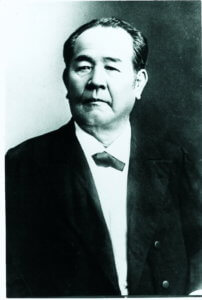Ozasa: 70 Years in Business Selling Only 2 Items at 3.3m2-SHOP in Size With $3.3 Million in Sales
CONTENTS
Long-standing Small Shop Business in Japan
Kichijoji, the number one spot in the “place in Tokyo I’d like to live” rankings. Three minutes’ or so walk from Kichijoji Sation, the focal point of the area, is “Ozasa,” a tiny Japanese sweet shop, founded over 60 years ago. For over 40 years, a line of people seeking Ozasa’s items has formed outside the shop from early morning every day before opening. The secret behind the appeal and continuous salability of Ozasa’s items is “uncompromising on taste” and “work philosophy” held by both the shop founder and his daughter, who succeeded him as the second generation owner.
Customers Lining from Early Morning Every Day
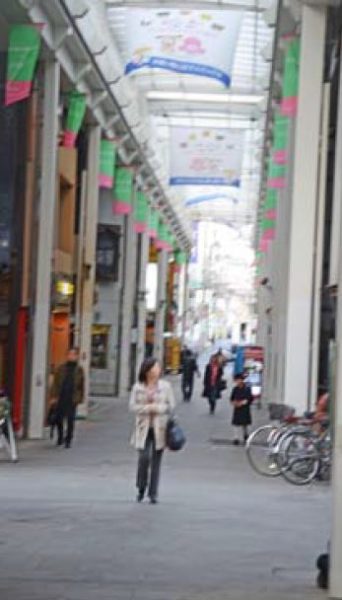
Although this is true in all cases, businesses start out small-scale. Ozasa is no exception. The second family generation and current owner Atsuko Inagaki recalls the time when her father Teruo Igami founded a small, cramped shack of a store on November 19, 1951. She had just graduated from high school at the time, and stood at the stall all day from eight in the morning until eight at night 365 days a year selling just one product: dango (rice dumplings). Three years later, in 1954, her father set up his one tsubo (3.3m2) shop in its present location. The products the shop sold then are the same two products it continues to sell today: yokan (sweet bean jelly) and monaka (wafer cake filled with bean jam). The taste, which hasn’t changed even today, attracts a line of people looking to buy those Japanese sweets early morning from around 5a.m. — before the shop has opened. The line even includes some people who stay at a hotel the night before just so they can buy them. An elderly lady waiting in line whose house was some two hours away said, “You can eat them with peace of mind. The ingredients are carefully selected and they put their heart and soul into making them — and for all that effort they put into making the product, it only costs 675 yen ($7.5) for one. If you bought them anywhere else it would cost at least twice as much. What’s more, they’re not too sweet and are pleasant on the palate, so they’re just right for giving as presents, though I also eat them myself.”
The sweets are usually so hard to get hold of that they are even known as the “phantom yokan.” Atsuko says, “We really can’t apologize enough to the customers who go to all that trouble to buy them. We really are grateful.” The reason for the sweets’ scarcity is that Ozasa can only make 150 sticks of yokan a day. Consequently, they are limited to three per person. By a simple calculation, that means only 50 people a day can buy them, so Ozasa inserts a little message and “apology” to the customer inside each yokan that asks for their forgiveness and explains that providing a high quality product that pleases the customer means that production is limited to 150 a day. As Atsuko explains, “Ozasa carefully selects its ingredients and puts as much effort and consideration as we can into how we mix them and other production methods. Although it’s inefficient, we use small pans and high-grade charcoal to make the finest yokan, so we can’t make any more than we do.”
The Roots of Ozasa’s Craftsmanship
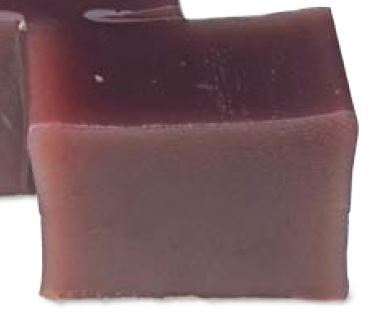
Why is Ozasa prepared to use production methods that take so much effort and hard work? This is so they do not stray from either the taste or quality that delights their customers. Atsuko says, “To cook the adzuki beans really tastily, we use small pots, so we can only cook 3 sho (one sho = 1.8 liters) in one go. Making yokan involves a number of processes culminating in the final kneading, into which we concentrate all our mental and physical energy. We can’t produce our finest yokan unless we do it this way.” Actually, midway through the making process, the bean paste briefly displays a purple sheen with a translucent quality — a very beautiful shine and color — and capturing the paste at that moment is said to produce the best yokan. Miss that chance and making the most supremely delicious yokan is no longer possible. In order that her customers enjoy delicious yokan, Atsuko puts her whole heart into making it. To that end, she gives her full unadulterated attention to the yokan, engaging in a sort of dialogue with it. It’s rather like something from the realm of Zen Buddhism. During the process, rather than geeing herself up to make the perfect yokan, Atsuko’s attitude is to scrutinize the condition of the adzuki beans and listen to their voice — a voice that cannot usually be heard. In other words, for Atsuko, making yokan is about listening to the adzuki speaking to her — listening for when they say, “Hey, now’s the moment you can make delicious yokan!” In that brief moment, the maker savors a stirring joy. Indeed, Atsuko had already been making yokan for ten years when she saw the purple sheen and first heard the voice of the adzuki. Seemingly, producing the moment of purple sheen isn’t possible unless conditions such as the quality of the adzuki, the way they are cooked, the mix of ingredients, the intensity of the heat they are cooked over, and the way they are kneaded together are all in alignment. As Atsuko says, “The adzuki beans are living things, so yokan is a living thing, too. Temperature and humidity are different every day, so the condition of the charcoal changes as well. It’s very rare for all conditions to be at their best at the same time. If things go well today, they won’t necessarily go well tomorrow, even if you try to make the yokan in the same way.
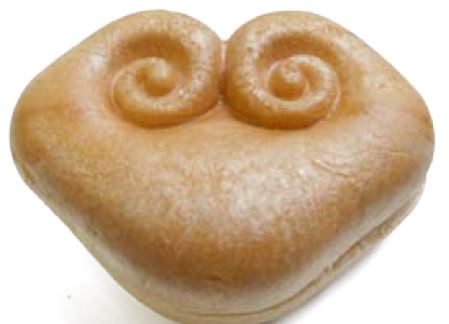
That’s the difficult thing about making yokan, but it’s also what makes it interesting, filled with happy expectation.” Incidentally, Atsuko’s way of making yokan wasn’t directly taught to her by her father. She observed her father making it and learned by imitation. Her father would taste the finished yokan she made every day, but if it wasn’t something he felt he could give to customers, all he would say was something like “Not enough kneading ”or “Heat not strong enough.” At that time, Atsuko had no idea what exactly was wrong with it. On the other hand, f the yokan turned out well, her father would simply mutter “Hmm” and nod his head. When Atsuko actually tasted that yokan, she found it really was delicious compared to the yokan her father had rejected. There’s even more to making yokan than sight, sound, and taste. When kneading the yokan, the movement of the wooden spatula used to stir it and the feeling transmitted through the spatula are also important. That can make the difference between good and bad yokan. The yokan must be kneaded to ensure it doesn’t burn, but trying to do this by turning the heat down or shortening the kneading time produces less flavor, which means you can’t make delicious yokan. So when Atsuko makes yokan, she uses all of her five senses to their full extent, plus a sixth sense that she has acquired from her experiences thus far.
Teachings from Father:“Co-existence and Co-prosperity” and “Flexible Thinking”
Aim for the Best
Atsuko’s father, Teruo, had a set phrase he always used: “First and foremost, make the most delicious thing.” There was a storehouselike building behind Teruo’s house where he continued trying to make the ultimate yokan by a process of trial and error. Teruo’s teachings are maintained by the second generation owner, Atsuko, who believes that the notion of always making the most delicious thing must be upheld without fail. It’s a tradition of preserving good things.
Make One-of-a-kind Products
Teruo focused on making yokan that was “unique” to Ozasa. “There are four types of yokan,” he would say, “Crumbly sweet potato yokan, regular sticky yokan, the jelly-like kingyoku-kan, and the melt-inthe-mouth mizu-yokan. Ozasa’s yokan is right in the middle where these four types intersect.” To make yokan of which people would say, “This is unmistakably Ozasa yokan,” Teruo sought the finest ingredients and researched a production method that would make the most their goodness, isolating the point where the four yokan textures intersected. So when Teruo produced yokan that he didn’t find acceptable, he would sometimes throw the whole lot away, denouncing it as useless.
Not selling imperfect yokan was, according to Teruo, “The most important thing toward winning customers’ trust and building up the traditions of Ozasa.” That was his belief.
Co-existence and Co-prosperity
Teruo also thought deeply about his adzuki wholesaler, and it was very important to him that he and his wholesaler had a trusting relationship. This was Teruo’s “attitude of dealing with one’s wholesaler earnestly.” In order to make a quality product, you could demand that the wholesaler do his best to find you some quality beans, but you then ought to at least pay for them straight away so as not to cause the wholesaler any more bother. This is how trusting relationships are built. There’s also the following anecdote about monaka: monaka is one of the more famous kinds of Japanese confectionery — a layer of sweet bean jam sandwiched between lightly toasted wafer made from pounded mochi rice. To make the finest monaka, Teruo sought out the finest wafer, travelling to various places and sampling various wares before he finally found a craftsman to make it. As they entered into business together, Teruo said to him, “Please don’t think of yourself as our wafer wholesaler; please imagine that we are both selling that wafer from the Kichijoji store together.” What he meant was that you, the wafer seller, and I, the bean jam seller, share a common destiny. Monaka isn’t monaka without both wafer and jam. It becomes onaka, and can be sold as such, only when wafer and jam are combined.
An Open and Wide-ranging View
Atsuko’s father seemed to perceive things in a uniquely positive and wide-ranging way, as exemplified by the following episode: one hot summer’s day, he said to Atsuko, “Don’t think of a bucket as just a tool for just fetching and carrying water; it can double up as a washbasin or a flowerpot. Or, if you make lots of small holes in the bottom and hang it somewhere high, it can ever be a shower.” Atsuko then set about making a homemade shower and used it to get through the hot summer. That’s just one example, but Teruo took every opportunity to teach Atsuko not to look at objects as being just one thing, or in other words, not to perceive things simply as they appear. He taught her that by changing the way she saw things, one object could appear as many different objects. Speaking about his flexible way of thinking, Teruo also once said the following: “Most people assume they can’t start a business because they haven’t got the funds or facilities. Anyone could start a business if they had all that in abandance. But if you don’t, you can just use your head.”
Thank the Customer Wholeheartedly
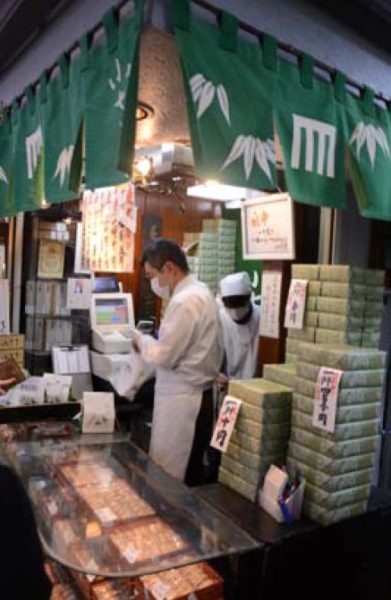
When the customer bought something, Teruo would say “Thank you very much” and bow politely, lowering his head very deeply. To Atsuko, it almost looked like he was thanking someone for marrying his own daughter. She was told from a young age to always put her heart into saying both “thank you very much” and “welcome” because whether you said those things wholeheartedly or not would naturally influence your attitude. In order that his store didn’t give off an atmosphere that made customers feel it was hard to approach, Teruo also advised the following: “Just standing around gives the store a stagnant air, so even when you don’t have any customers, do some cleaning or try changing the position of the goods around a little — make the place active.” Although it isn’t something we can see with our eyes, customers seem to find places with stagnant atmospheres hard to enter. Being a Successor and Motivating Employees Teruo was very strict with his successor, his own daughter Atsuko. He said to her, “Now you
must shoulder responsibility for the whole household. The more you carry on your shoulders, the more effort you’ll put in. ”Now the time has come for Atsuko herself to train up her own successor. “To be honest,” she admits, “I’m a little uncertain how I should train them and pass on the Ozasa taste. If it was my own child I’d teach them by really urging them to put their all into it, but you can’t do it that way these days.” Atsuko learned her father’s method by “watching, remembering, and reflecting on it myself,” so on the one hand she thinks, “If they watch what I do carefully, I’m sure they’ll pick it up.” However, the times have changed, and passing on her skills won’t be as easy as that. There’s no operating manual for making Ozasa yokan, and if you tell an employee “Do it like this” they’ll reply “I’m doing it properly in that very same way.” But from Atsuko’s point of view, it isn’t the very same way.
How to make a long-lasting business
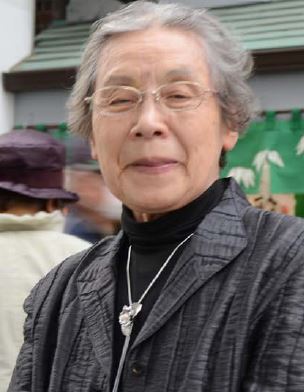
How to convey those finer points is a difficult question. To answer it, she came up with almost the reverse idea; have the employees do the work, and when they think the yokan is in prime condition, have them check the time and make a record of the details. This isn’t a bid to try and create a manual, but to help the employees learn those details; if they make a record at the moment when the yokan reaches prime condition and they stop working on it, thereafter they’ll better understand how long it took, how they made it, and the result — what sort of product they produced. In short, it’s a system of yokan data management.
Atsuko lost her father in 1992. She thought long and hard about what should happen to Ozasa in the future. As a result, she decided to preserve the Ozasa tradition of making good things, but also to take note of how the times had changed and run the business accordingly. The Ozasa her father had built up plus the design of the box and wrapping paper for the yokan and monaka would be preserved. Needless to say, so would the method of making them. Actually, Atsuko suffered from a spell of ill health in late 2012 and was away from the kitchen, although for just a short while.
However, when she tasted the yokan made during that short period, she found it wasn’t the taste of real yokan that she had always strived for until then, though the difference was probably almost imperceptible to all but a few. “What have I been teaching my successor all this time?” she reflected, “Let’s refocus and do it over again from square one. I’ll properly teach this taste and method of making yokan to my successor anew. Please bear with us, because we can make our yokan even more delicious. Even today, our yokan can’t provide 100% satisfaction, so I’m going to try my best to keep working on it until I’m 125!” When asked what her favorite phrase is, Atsuko replies, “Surely and steadily, one step at a time” — a phrase flavored with the continuous step-by-step development of the current Ozasa, its history, its loyal customers who hanker after the Ozasa taste, and the trust that has built up between them.

